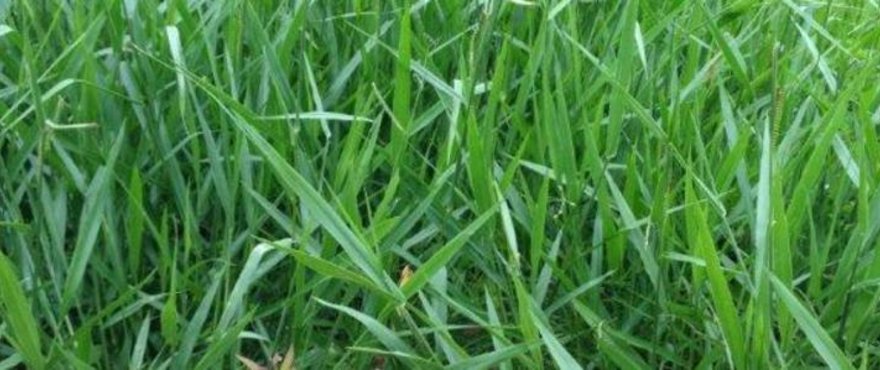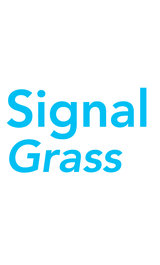Download a copy of the Signal Grass factsheet.
Native to Africa, Central and East Africa , including Burundi, Kenya, Rwanda, Tanzania, Uganda and Zaire. Signal Grass is now widely distributed throughout tropical America, south-east Asia and the Pacific. A fast growing perennial grass with a strong stoloniferous root system and long trailing stems which will readily root down from the nodes. Signal grass is an aggressive tropical grass with ability to grow well in a wide range of soil and moisture conditions. It is low-growing leafy perennial grass with an erect or trailing habit. Leaf canopy can grow to 50cm above ground. Used widely in erosion control and revegetation in roadside and heavy construction sites, mining, etc, often mixed with a legume to maintain a healthy and sustainable cover. Well-adapted to latitudes between 12ºS and 28ºS, with best growth in the humid and sub-humid tropics. Most productive in coastal and sub-coastal areas, including tropical highlands in the humid tropics (to 800m ASL). It is not recommended in the subtropics because of poor early- and late-season growth. Leaves are killed by mild frosts, but plants regrow with the onset of warm conditions.
Key features
- Forms a dense, high yielding sward, tolerates heavy grazing
- Has an aggressive stoloniferous root system and long trailing stems
Key benefits
- Best suited to humid tropical, high rainfall regions
- Tolerates high soil aluminium levels
- Very persistent, including under seasonally dry conditions
Agronomy and management
Graze lightly within 6 months of planting to encourage early plant development. Very tolerant of cutting and grazing by cattle once established and may dominate under set-stocking at high stocking rates. Can be a productive pasture if high rates of N are regularly used. Spreads well by runners which root down at the nodes, particularly in the first year after sowing when there is often bare soil. Spread into bare areas is encouraged by grazing and fertiliser application to encourage vigorous growth.
Establishment
Large areas are easily planted with the large, free-flowing seed. Seed is frequently dormant for 6 months after harvest and should be stored or scarified before planting. Seed is broadcast at a rate of 6–8kg/ha, then lightly covered and rolled. Commonly planted with a range of forage legumes. To avoid slow poor establishment associated with cool soils: sow during summer months in the sub-tropics and elevated tropical areas; spring/ summer in tropical coastal areas. Plant before seasonal rainfall and ensure a moist soil profile for 10–14 days after sowing if possible. Plants will often establish from dormant seed over the summer growing period.
Pest / Disease Resistance Relatively free from diseases and pests including leaf-cutting ants but susceptible to spittlebugs (Aeneolamia, Deois and Zuliaspp.). Spittlebug susceptibility has greatly reduced the use of signal grass in tropical America, although mature stands may recover from attack. Some susceptibility to rust (Uromyces setariae-italicae) and brachiaria blight can reduce growth and seed yields.
Performance
DM yields can be very high under heavy fertiliser application, with yields of 10t/ha/yr DM commonly recorded. Production reduces dramatically in the dry season and will cease in winter in subtropical environments. There is a direct relationship between production and N availability with this species.
Animal production
Heavily fertilised pastures can be highly productive (up to 1,300kg/ha liveweight gain) due to the high yields of herbage and ability to carry high stocking rates. In Brazilian savannas, at stocking rates of 2.5 head/ha, 340kg/ha/yr LWG have been recorded. In the humid tropics of Peru, at 4 head/ha, B. decumbens with D. heterocarpon subsp. ovalifolium gave LWGs of 380g/hd/day and 640kg/ha/yr. On more fertile soils with a reasonable legume component, gains of 450–600g/head/day for individual cattle and 400–600 kg/ha/yr are commonly achieved. Feeding value is moderate - high but dependent on soil fertility and age and proportion of leaf and stem. Crude protein ranges from about 8% (mature material) to 20% (fertilised young leaf) and crude protein digestibility ranges from 30% (flowering) to 70% (3 week regrowth). Digestibility for young leaf is about 75%, declining to 50% when mature. Mature, hayed-off material is of low quality. Signal grass is palatable to ruminants when young and fertilised, but declines quite rapidly with maturity. Generally not eaten by horses.
Toxicity
Contains chemicals which can damage the liver and cause skin photosensitisation in cattle, deer and sheep (rarely fed to sheep) if signal grass is a large component of the diet, although the condition is rare in Australia. Rotation with other grasses is recommended if symptoms (swelling skin and raw sores) occur. Signal grass is generally poorly accepted by horses, but can cause a ‘big-head’ in horses unless calcium is supplemented or alternative feed is provided.
Suggested sowing rates
Recommended planting rates for AgriCOTE Pro-Tech for Signal grass are: Marginal dryland: 2–6kg per hectare Good dryland: 8–10kg per hectare Irrigated: 12–15kg per hectare
Disclaimer: The information presented in this brochure is from official and other sources and is considered to be reliable. It is provided in good faith and every care has been taken to ensure its accuracy. Barenbrug does not accept any responsibility for the consequences that may arise from the acceptance of recommendations or the suggestions made.



